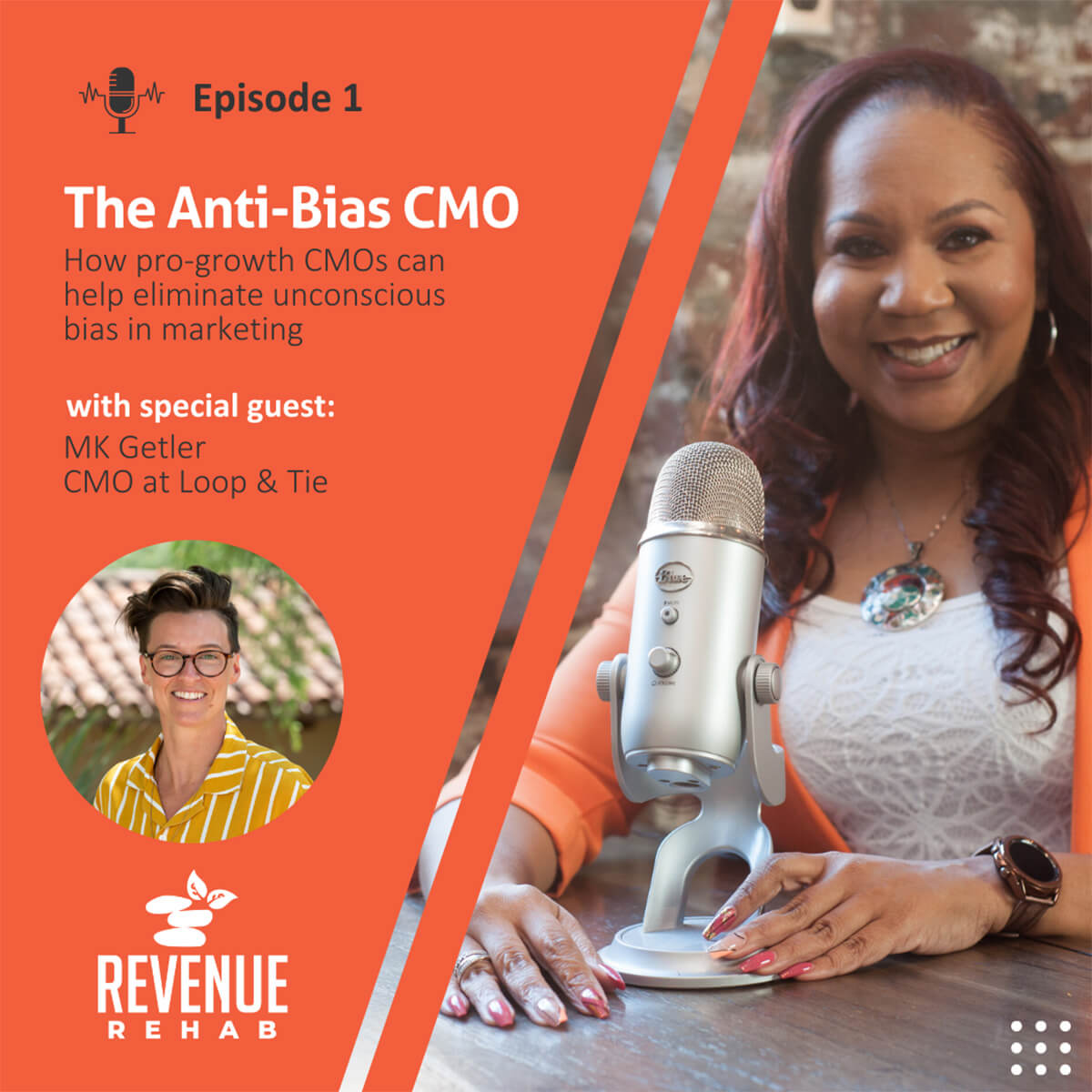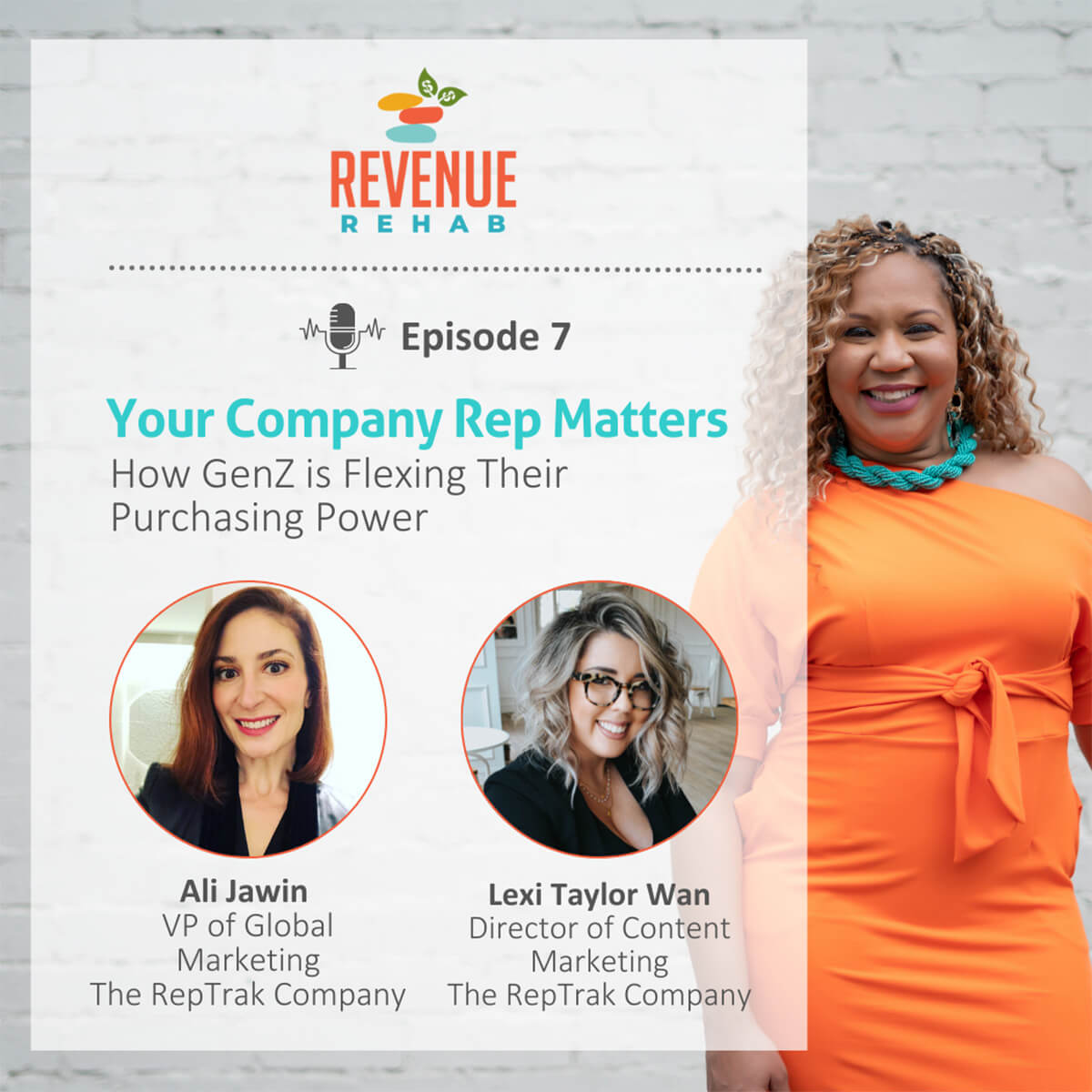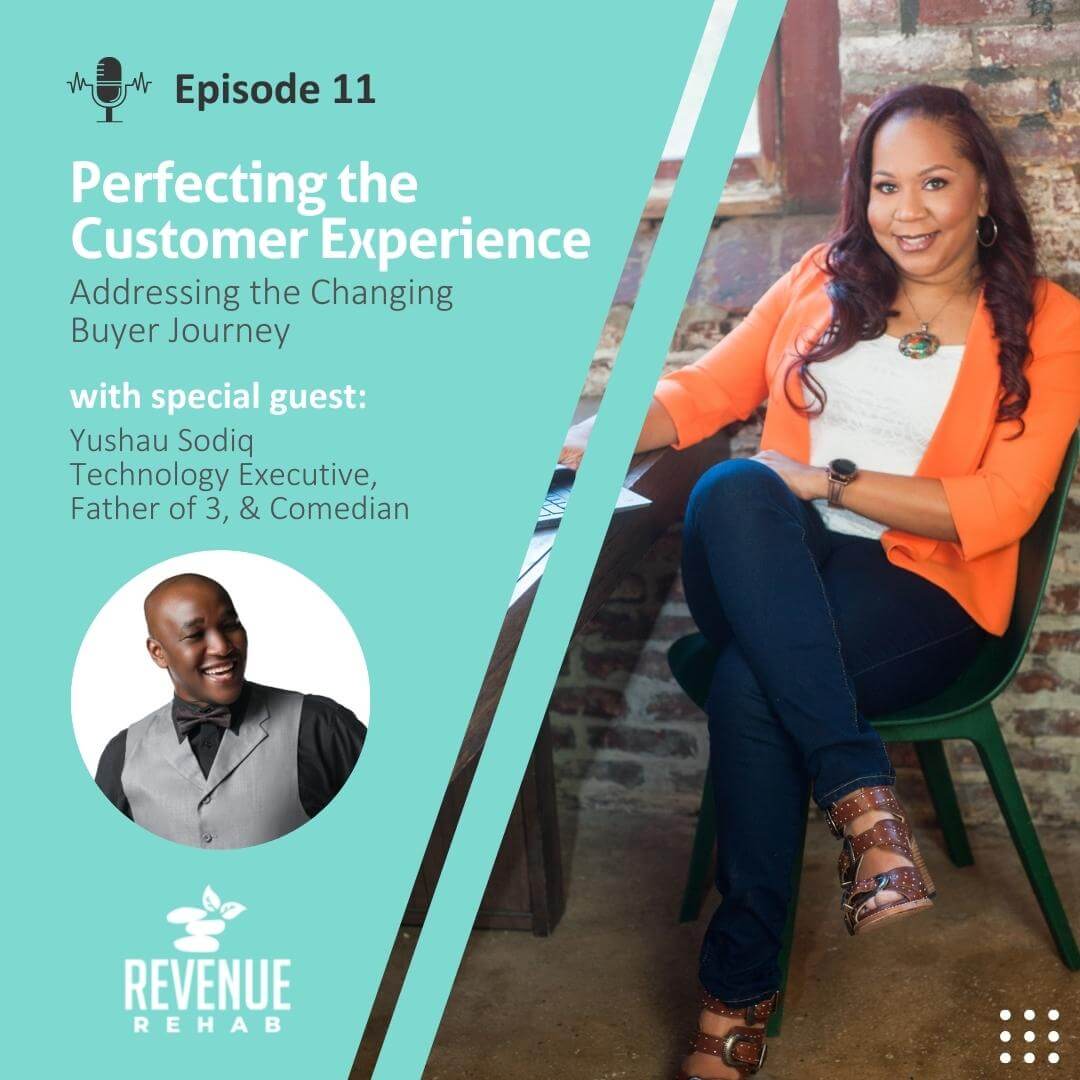The pivot is not a new move in the modern marketer’s playbook.
The most effective marketing leaders understand that managing change—and thriving through it—is a necessary part of the job. To consistently deliver intended results and differentiate the brands we champion takes mastering the pivot. It means quickly adapting to evolving buyer trends, market conditions, competitive landscapes, product roadmaps and cultural mandates. It also means having the courage to regularly challenge, and change if necessary, our own approaches, thinking and even vocabularies.
That’s why we created the Revenue Rehab podcast: to help ignite new thinking and develop collective solutions to the biggest challenges facing marketing leaders, especially anyone in the role of CMO or CRO. In every episode, we dive in and uncover actionable takeaways with practical applications. Amid constant change and the growing imperative to improve customer experience and increase revenue, Revenue Rehab is like therapy, but for marketers.
While each episode focuses on a single challenge, we found recurring threads worth surfacing, synthesizing and sharing. First up: The Changing Buyer Journey.
Start by Ditching the Funnel
Behind every modern marketer is an empowered consumer. We understand, firsthand, the evolution of the new self-guided and highly expectant buyer. Whether you’re marketing in a B2B or B2C environment, meeting and exceeding buyer expectations means throwing out the notion of a linear sales funnel in which prospects enter at the top and revenue teams pull through—and out—the bottom.
In Revenue Rehab Episode 11, Perfecting the Customer Experience: Addressing the Changing Buyer Journey, expert guest Yushau Sodiq calls for an infinity loop to replace the funnel. The loop more clearly illustrates the path from buyer journey to long-term customer experience. Today’s journey is an ongoing experience that does not begin and end in a funnel. The journey is not over when the prospect becomes the customer. It’s an ongoing relationship that progresses from prospect to new customer to repeat customer.
Take It Personally
So how do marketers maintain that continuous connection to optimize customer experience and drive revenue? The answer is hyper-targeted personalization, according to Yushau. To optimize marketing effectiveness on this non-linear path from buyer journey to customer experience, our messages and campaigns must hit up-close and personal to resonate and drive action.
To get personalization right, he says, requires constant, strategic and methodical testing. If something doesn’t work, move on, and if it does, double down and try it again. Invest as much in segmentation and targeting with customers as you do with prospects. For best results, don’t limit personalization to email campaigns. With the right data, you can deliver relevant, personalized experiences across channels, including on your website and in your product.
To personalize your campaigns for segmented customer groups, begin by building customer personas based on engagement levels throughout the customer experience journey just as you would for prospects along the buyer journey. Start small, pick a persona, test and learn.
It all comes back to revenue. You can’t influence what you don’t understand. If we, as marketers, don’t understand what is happening, how things are performing, we can’t manage the buyer journey and how we communicate throughout it. We can't continuously optimize the customer experience and drive revenue.
Let Your Data Be Your Guide
To give prospects and customers what they need, when they need it, rely on data. Much of it you already have—both quantitative and qualitative, across touchpoints. Fully leverage your Google Analytics, CRM, SEM and social reporting. Then, enhance with third-party data. Yushau likes 6Sense, Terminus, Salesloft, Demandbase and LinkedIn for that. The idea is to listen to your whole, data-rich ecosystem to target and customize throughout the ongoing journey. We know the broad, unsegmented, spray-and-pray campaigns of the past rarely met goals, and they simply do not stand a chance of success in the changing buyer journey.
But if you haven’t implemented segmented, personalized campaigns fueled by a serious data analytics program, where do you start? Yushau recommends beginning with data-rich Google Analytics and Google Search Console for digital web data. You’ll learn how long visitors are staying on your site, where they’re going, for how long and where you lose them. Then, move to SEO data from sources like Moz, Semrush and Neil Patel. Integrate the digital web analytics with your CRM data.
If your budget and resources don’t allow for third-party data integration, you can begin segmentation and targeting based on what you know from what you already have. Your team has data to share. Leverage internal resources—customer success, support, sales and product teams. Ask about sales calls, support calls. What kinds of customer issues and prospect roadblocks are they encountering? Apply your product data, from utilization tools usually built in it.
Because martech solutions are ubiquitous, there is the temptation to default to more technology as a cure-all. But, in fact, what you have is the best place to start. Integrate your data sources, add the data you can, when you can, and continually test and evaluate.
One more data-related investment we’ve seen power up results is a dedicated analytics expert. Whether an external consultant or someone you bring onboard full time, expert data analysis is uniquely powerful. We’re working on a large client project now to combine all disparate data sources from a very robust tech stack. As a marketer and strategist, I’ve learned from this massive data integration that the expertise of a data analyst is a gamechanger. If you have the budget, I highly recommend it. The return in quick integration of reporting and insights you can put to work to start achieving results is well worth the investment.
Be Real. Because It (Really) Matters
If your external facing brand is only performative, you start to see it in the results of your marketing throughout the customer journey. In the Age of the Consumer, buyers are well aware of their power, and they’re asking more from brands than promises and well-timed hype. Increasingly, especially among Millennials and Gen Z, buyers are choosing brands that are intentional and authentic in their societal impact. They recognize that their buying power extends beyond the initial transaction and are reserving their loyalty and wallets for brands with which they feel most closely aligned.
In Revenue Rehab Episode 1, The Anti-bias CMO: How Pro-growth CMOs Can Help Eliminate Unconscious Bias in Marketing, MK Getler discuss how everyday unconscious bias permeates marketing and the effects. They address the shift from older generations that put a premium on convenience to Gen Z’s priority of thoughtful intention. They warn that both B2C and B2B brands must take notice: “They are the future decision makers who are going to be deciding, based on their morals and based on their values, how they want to spend their company's finances and budgets.” And according to the data, it’s not just Gen Z.
So, it’s time to get real about being real. After the tumult of the last two years, BS meters are on and finely tuned. Buyers now have the tools and technologies to follow brands and keep them honest and accountable. They have the means to communicate with each other when an organization falls short. Spend a few minutes on Reddit, and you’ll quickly see what those conversations look like.
In Revenue Rehab Episode 7, I was joined by by Ali Jawin, VP of Global Marketing, and Lexi Taylor, Director of Content Marketing, at The RepTrak Company, to talk about what research in The 2022 Global RepTrak® 100 tells us about reputation, perception and their real effects on revenue today.
From Diversity, Equity, Inclusion and Belonging (DEIB) to Environment, Social and Governance (ESG), your promises and your follow-through matter. The RepTrak Company research shows that consumers are paying attention to brands’ social promises, and they’re holding them accountable when they don’t keep them. Gen Z is the youngest generation to focus on now, and they are getting attention from marketers because they have just entered the workforce, are making money and are gaining purchasing power.
Of all the generational demographics, Gen Z has the highest expectations, particularly around ESG standards, the non-financial criteria used by investors, employees and consumers to measure an investment or a company’s sustainability record. This includes things like carbon emissions, pollution, waste management and green energy initiatives. Expectations, though, are rising across all generations, according to data.
So, what does that mean for how we market throughout the changing buyer journey? For brands to win loyalty (and long-term revenue) Ali and Lexi say you must live up to your promises and communicate when you do. Perception is reality, and reputation exists whether you manage it or not. In fact, you have great control over it, and people want you to communicate. When they don’t know, they are going to fill in the gaps, and likely not in your favor.
So, communicate clearly and often because there is a revenue connection for anyone in the role of CMO and on the hook for it. Yes, DEIB and ESG are seemingly difficult to directly tie to revenue. But they are directly tied to reputation. When reputation suffers, there is a massive hit to bottom line. Here’s a data story to support that, according to The RepTrak Company data:
- A high ESG score results in a 60 percent willingness to buy.
- A low ESG score results in a 20 percent willingness to buy.
That’s an astounding 40 percent difference. When applied to pipeline, it is a direct line to revenue. If you’re wrestling with allocating budget and resources to ESG efforts, the data clearly backs up the value.
Stay the Course
The journey has changed. Along the new, winding path from prospect to buyer to new customer and, ultimately, to loyal brand advocate, the role of CMO as revenue generator and customer experience booster is increasingly critical. Thoughtful pivots will always be necessary, but here’s what we know for sure: Sales funnels no longer serve us; data-driven personalization is necessary, not just nice to have; and core values alignment matters—to our customers and our bottom lines.
Change is constant, and adapting to it necessary. We must regularly challenge our approaches. But dedication to listening, seeking to understand, communicating well and staying authentic is the unchanging direction for a smooth and lasting ride.
About the Author
Follow on Twitter Follow on Linkedin Visit Website More Content by Brandi Starr
















